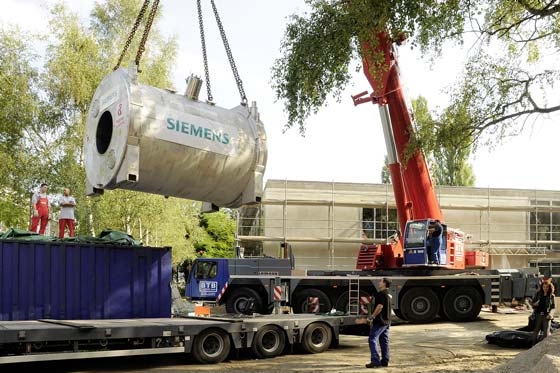In hospitals and clinics, magnetic resonance imaging is quite common today. Clinicians like it because it shows much better images of soft tissues than computed tomography (CT) and uses no ionizing radiation. What it does use is a powerful magnetic field.
Magnetic resonance tomography has been around for just over 30 years so it is much younger than something like X-ray technology(>110 years) but ordinary MRI technology uses magnetic flux densities of 1.5 and 3 tesla.
A new MRI device delivered to Physikalisch-Technische Bundesanstalt (PTB) and the Experimental and Clinical Research Center (ECRC) of the Max Delbrück Center (MDC) for Molecular Medicine in Berlin-Buch uses a whopping 7 tesla and, they say, it will provide the clearest images ever taken of our insides.

These new devices have been used in research but this will be the first time it has been used for hospitals and clinics and they believe it will jumpstart cardiovascular research. Heart research by magnetic resonance tomography is still considered very difficult.
The magnetic resonance tomograph cost approximately seven million Euros and weighs 35 tons and was delivered to its new location at the Max Delbrück Center yesterday.
Its higher magnetic field will provide sharper images and better insights into the smallest structures of the human body. The aim is to detect the risk or commencement of an illness at a very early stage in heart, brain and cancer research.

PTB scientists, the group dealing with the physics and technical issues of the joint project, are responsible for making the potential of this tomograph useful for applications in clinics.
The other partners in the project, besides the Max Delbrück Center and the PTB, are Siemens, the constructors of the 7 tesla device, and the Charité hospital. The new ultra-high-field MRT equipment of the ECRC has been completed with a 9.4 tesla small animal MRT of the Bruker company which was supplied three weeks ago.





Comments